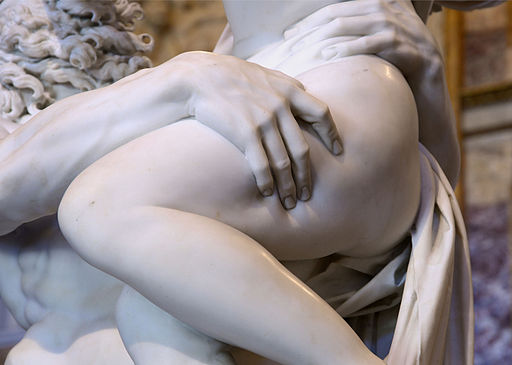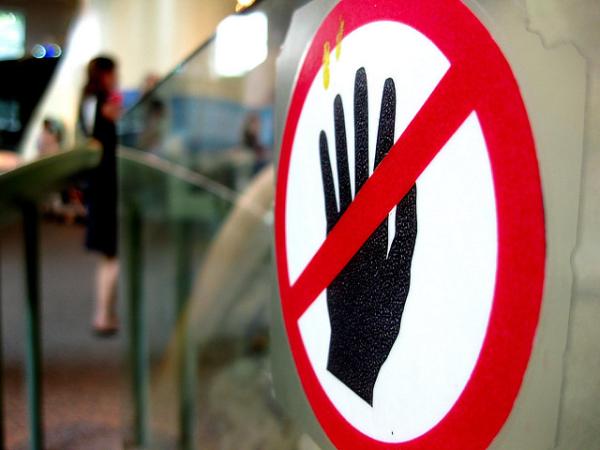Unauthorized touching has been in the news quite a lot in the last month. I found a study on a form of unauthorized touching that many more of us than those cited in the press, participate in – touching objects in museums. Entitled Rehabilitating unauthorised touch or why museum visitors touch the exhibits, this observational study looks at why and what we touch, in this case, at the British Museum.
Touching stuff evidently has a longer history in museums than we might think. The original collections of curios, frequently private collections, were open to inspection, that was a part of their value. With the development of public museums, the wear and tear on the objects were too great. The only way institutions charged with conservation and preservation of our cultural artifacts could fulfill their role was to restrict touching. Touching never really went away, after all, curators and experts touch object all the time. Museums became places only to use our eyes, to look at the object and read the accompanying plaque. In the last twenty or thirty years, museums have again become more multi-sensory, with audio guides, performances and of course, venues for touching – often for children.
Unauthorized touching in museums comes to our attention mostly when objects are defaced, the ‘attacks’ on the Pieta or the Little Mermaid come to mind. But the study reflected on the touching that you and I do, what is described as "low-key touching 'the fingerprint of an illicit touch.'"”
Why we touch?
The author interviewed visitors and guards to find the answer to this question. Now in part, the reason given was “I didn’t know.” And often this was explained by signage saying Do Not Touch being too small, or out of the way, or ambiguous. Other rationalizations included the object being out there in the open, not protected, hence fair game; or that there were fewer guards to remind you. But there were other more intriguing reasons.
Thus, the visitors therefore touched the objects on display to establish that were real and not replicas, to find out about the material qualities of an exhibit and the processes by which it was made, and to get a grasp on the skill involved in its manufacture. They also touched to make contact with the past.
How are exhibits touched?
As you might expect, our touching of objects is not random. For instance, animal sculptures were frequently touched or more accurately petted.
Visitors behaved in ways that were appropriate to the real-life version of that thing, for example, stroking a horse’s nose, but precisely because it is a carving, they were free to push the boundaries of what is acceptable or safe.
The human sculpture was a more frequent site of boundary-pushing. No surprise, people couldn’t resist touching that bare breast or inviting buttock. And that what we might term playful touching extends to selfie’s taken with sculpture, memorializing our transgressions and creating a visual joke.
Which exhibits are touched?
Touch was not a one-way street; there were specific characteristics of sculpture that beckoned. Frequently it was the expressive character or the way in which expression and materials were linked. I know for myself it was only the presence of guards, my wife, and a modicum of social responsibility that kept me from touching Bernini’s Rape of Proserpina. (How can such life be captured in stone?)

The subject of the sculpture, the quality of attractiveness, the facial and bodily expression, and the particularity of the materials were all important factors in why some objects were touched more than others. Indeed, some objects had such a strong attraction for visitors that they experienced it as a loss of volition.
As it turns out, once again, unauthorized touching in museums is more complicated than mere defiance of the rules. Touching is more than a gesture; it is about exploration and connection. If we listen to our metaphors, we might realize that, after all, some concepts are easy to grasp, while others slip through our fingers. For museums, the goal of touching people can be paradoxical as this observational study suggests.




